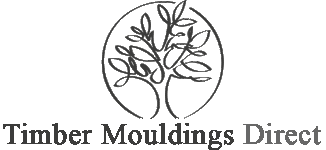The Ultimate Guide to Stair Parts: Explained for Easy DIY Projects
Embarking on a DIY project can be an incredibly rewarding way to enhance your living space, especially when it comes to revamping your staircase. A staircase is not just a functional element within your home; it's a central feature that can dramatically affect the aesthetic and atmosphere of your space. Whether you're considering a minor refresh or a complete overhaul, understanding the various stair parts is crucial. This guide, brought to you by Timber Mouldings Direct, will walk you through everything you need to know about stair parts for your DIY projects.
Stair Parts Overview
At first glance, a staircase might seem like a straightforward structure, but it comprises several key components, each with its specific function and aesthetic appeal. Here’s a breakdown of the main parts:
-
Treads: These are the horizontal boards that you step on when ascending or descending the stairs. They are a focal point of any staircase and can be made from a variety of materials, though wood is a popular choice for its warmth and natural beauty.
-
Risers: Risers are the vertical boards that sit between each tread. While some staircases have an open design without risers, traditional stairs include them for a complete, polished look.
-
Newel Posts: Serving as the main anchor points of your staircase, newel posts are substantial vertical posts placed at the bottom and top of your stairs, and sometimes at key turns or landings. They provide structural support and can be a major design feature.
-
Spindles/Balusters: These are the vertical rods or posts that run between the handrail and the stair's base (or tread if there are no risers). Spindles play a crucial role in the staircase's safety by preventing falls, and they offer an excellent opportunity to incorporate design elements into your staircase.
-
Handrails: As the name suggests, handrails are the rails held onto when walking up or down the stairs. They run along the top of the spindles and are an essential safety feature, as well as a design element of the staircase.
-
Baserails: Baserails run along the bottom of the spindles, on the staircase itself. They help to secure the spindles in place and contribute to the overall aesthetic of the stair design.
Selecting the Right Materials
When selecting materials for your stair parts, consider both the function and the aesthetic you aim to achieve. Timber is a timeless choice, offering warmth, durability, and a range of finishes. At Timber Mouldings Direct, we understand the importance of high-quality materials. Whether you're looking for the traditional charm of oak or the contemporary appeal of walnut, choosing the right timber can significantly impact your staircase's overall look and feel.
Customisation and Finishing Touches
One of the joys of a DIY project is the ability to customise your staircase to suit your unique style. Timber mouldings and stair parts can be painted, stained, or varnished to match your existing decor. For those looking to add a personal touch, consider paintable MDF stair parts from Timber Mouldings Direct, which allow for complete customisation in terms of colour and finish.
Installation Tips
While installing or renovating a staircase can seem daunting, careful planning and preparation can make the process much smoother. Here are a few tips:
- Measure twice, cut once: Accurate measurements are crucial to ensure that all parts fit perfectly.
- Start from the bottom up: Begin your installation with the newel posts, followed by the baserails, spindles, and handrails.
- Safety first: Always ensure that your stair parts are securely fastened to withstand daily use.
Conclusion
Renovating or installing a staircase is a substantial project that can enhance your home's functionality and aesthetic appeal. By understanding the various stair parts and choosing the right materials, your staircase can become a standout feature in your home. Timber Mouldings Direct is here to support your DIY projects with high-quality stair parts and expert advice.
Remember, a well-designed staircase is not just about functionality; it's about creating a lasting impression and enhancing the overall beauty of your home. Whether you're an experienced DIY enthusiast or a newcomer ready to tackle your first project, this guide is your first step towards a successful staircase renovation.

Leave a comment